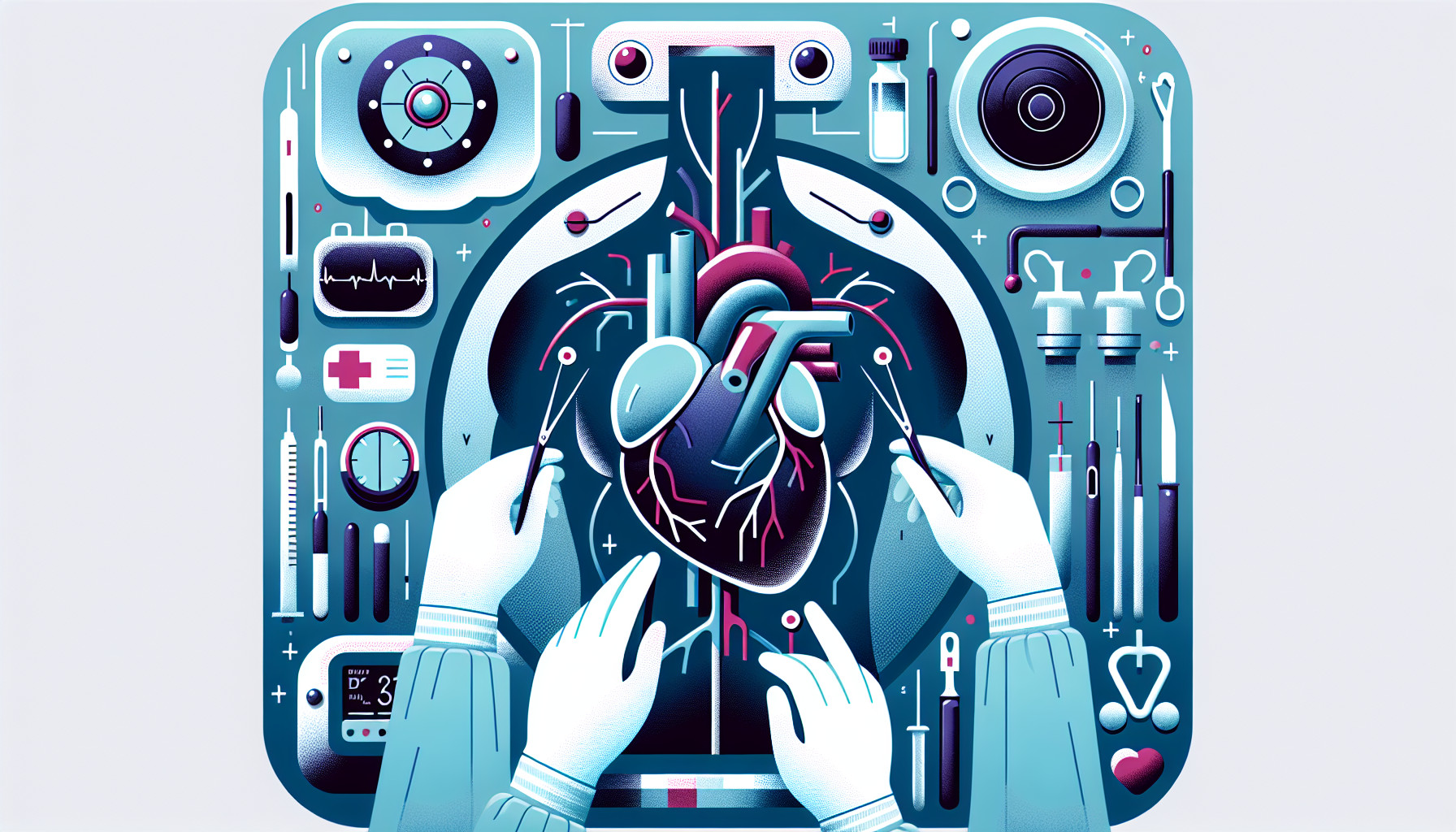Our Summary
This research paper is about a complication that can occur after heart bypass surgery, known as non-infectious sternal dehiscence (NISD). This condition, which involves the breastbone (sternum) not healing properly, was investigated in a group of patients over a 20-year period.
The researchers found that NISD occurred in less than 1% of the surgeries they reviewed, which aligns with what previous studies have reported. They also found that the problem typically showed up about 12 days after surgery.
The patients who experienced this complication were generally older, had a higher body mass index, more cardiovascular risk factors, and more often had a history of lung disease, heart attack, and diabetes.
While these patients needed to stay in the hospital about 15 days longer than those without this complication, their chances of survival over the short- and long-term didn’t significantly differ from those with a properly healed sternum.
In essence, while NISD is a rare and serious complication that can extend hospital stay, it doesn’t appear to significantly impact overall survival rates.
FAQs
- What is non-infectious sternal dehiscence (NISD) and how often does it occur after heart bypass surgery?
- What factors were found to increase the risk of developing non-infectious sternal dehiscence after heart bypass surgery?
- Does non-infectious sternal dehiscence impact the survival rates of patients after heart bypass surgery?
Doctor’s Tip
To help prevent NISD after coronary artery bypass surgery, it is important for patients to follow their doctor’s post-operative instructions carefully. This may include avoiding activities that put strain on the chest area, such as heavy lifting, for a certain period of time. Patients should also make sure to keep the surgical incision clean and dry to prevent infection, as this can also contribute to sternal dehiscence. Additionally, maintaining a healthy lifestyle with regular exercise and a balanced diet can help promote proper healing after surgery. If any signs of complications, such as redness, swelling, or discharge from the incision site, occur, it is important to contact your healthcare provider immediately.
Suitable For
Patients who are typically recommended for coronary artery bypass surgery are those who have severe coronary artery disease that cannot be managed effectively with medications or less invasive procedures such as angioplasty. These patients may have symptoms such as chest pain (angina) or shortness of breath, or they may have had a heart attack.
Other factors that may indicate a need for coronary artery bypass surgery include:
- Multiple blockages in the coronary arteries
- Left main coronary artery disease
- Diabetes
- Previous failed angioplasty
- Heart failure
- Poor heart function
Overall, the decision to recommend coronary artery bypass surgery is made on a case-by-case basis, taking into account the patient’s overall health, the severity of their coronary artery disease, and their risk factors for complications.
Timeline
Overall, the timeline of a patient’s experience before and after coronary artery bypass surgery is as follows:
Before surgery:
- Patient undergoes pre-operative testing and evaluation to assess their overall health and suitability for surgery.
- Patient may be put on medications to manage their symptoms and prepare for surgery.
- Patient meets with their surgical team to discuss the procedure, risks, and expected outcomes.
During surgery:
- Patient is placed under general anesthesia.
- Surgeons perform the bypass surgery, which involves creating new pathways for blood flow around blocked or narrowed coronary arteries.
- Surgery typically takes several hours to complete.
After surgery:
- Patient is taken to a recovery room and closely monitored for any complications.
- Patient may spend a few days in the intensive care unit (ICU) for further monitoring and care.
- Patient is gradually moved to a regular hospital room as they recover.
- Patient undergoes physical therapy and rehabilitation to regain strength and mobility.
- Patient is discharged from the hospital once they are stable and able to manage at home.
- Patient continues to follow up with their healthcare team for ongoing monitoring and management of their heart health.
What to Ask Your Doctor
- What is the likelihood of experiencing non-infectious sternal dehiscence (NISD) after coronary artery bypass surgery?
- What are the risk factors that may increase the chances of developing NISD?
- How soon after surgery does NISD typically occur?
- What are the symptoms of NISD that I should watch out for?
- How is NISD diagnosed and treated?
- How does NISD impact the recovery process and length of hospital stay?
- Will NISD affect my long-term prognosis and overall survival rates?
- Are there any preventive measures or precautions I can take to reduce the risk of NISD?
- What follow-up care or monitoring will be necessary to detect and manage NISD if it occurs?
- Are there any lifestyle changes or modifications I should consider to promote proper healing of the sternum after surgery?
Reference
Authors: Silverborn M, Heitmann LA, Sveinsdottir N, Rögnvaldsson S, Kristjansson TT, Gudbjartsson T. Journal: J Cardiothorac Surg. 2022 Oct 3;17(1):249. doi: 10.1186/s13019-022-02015-1. PMID: 36192764
